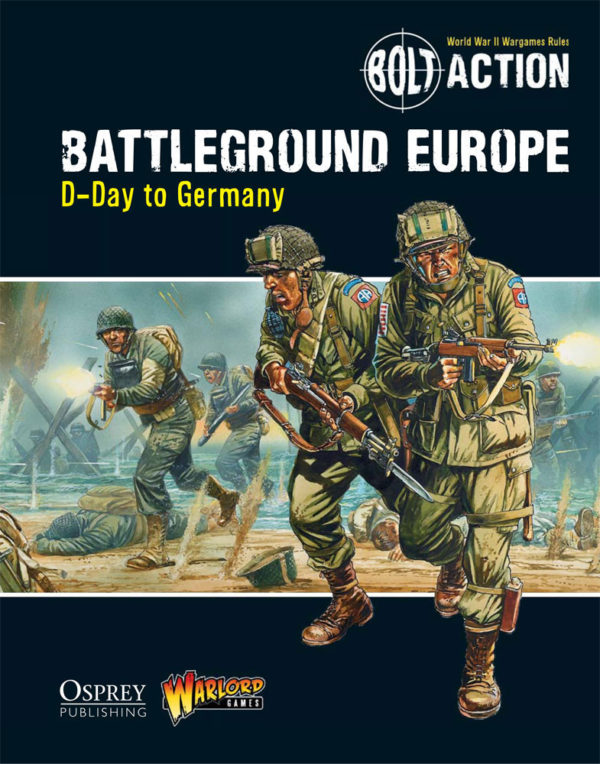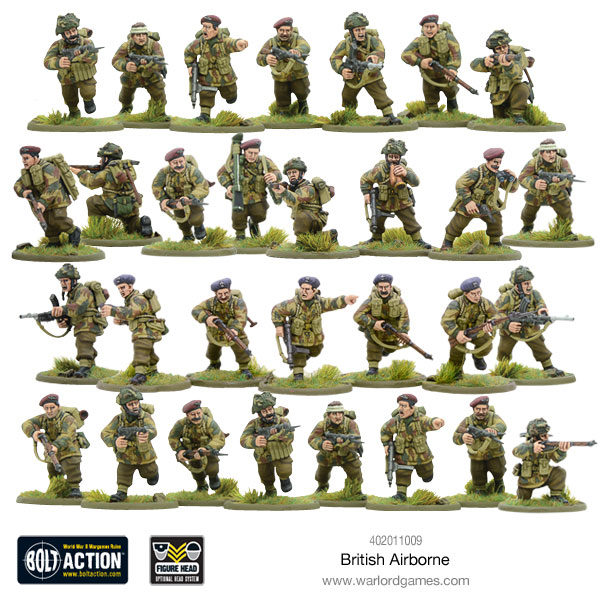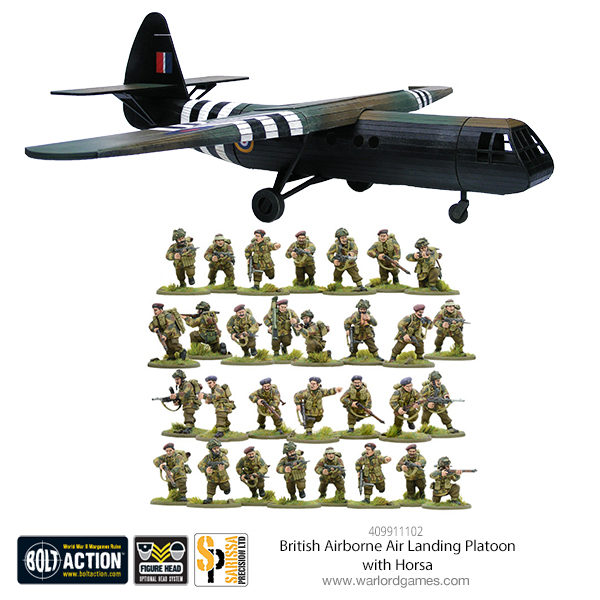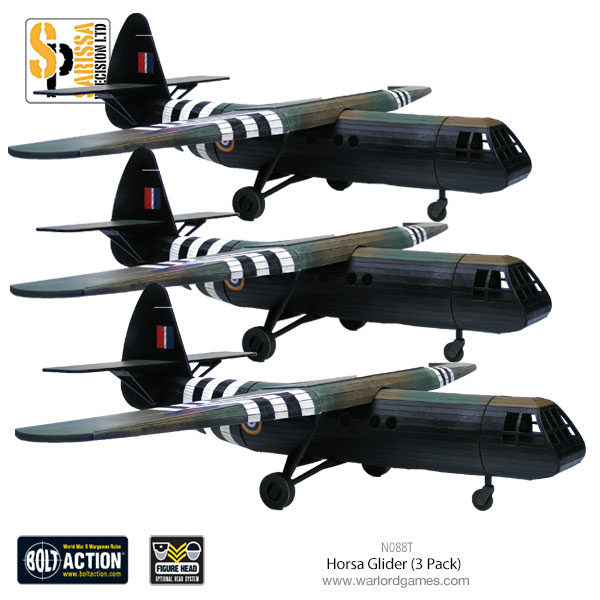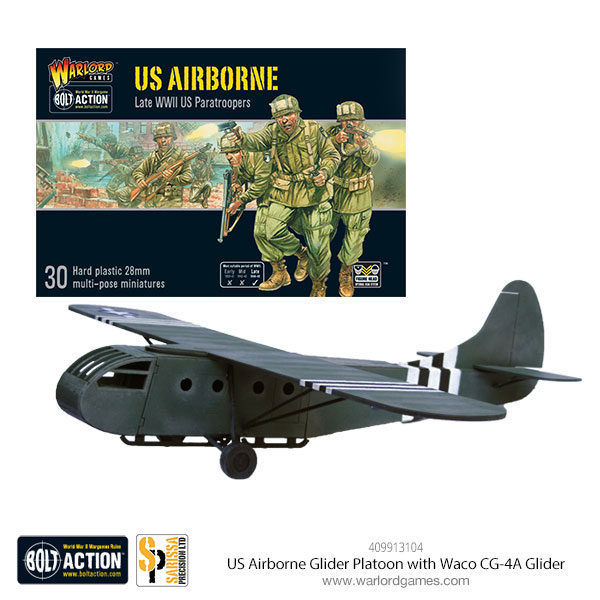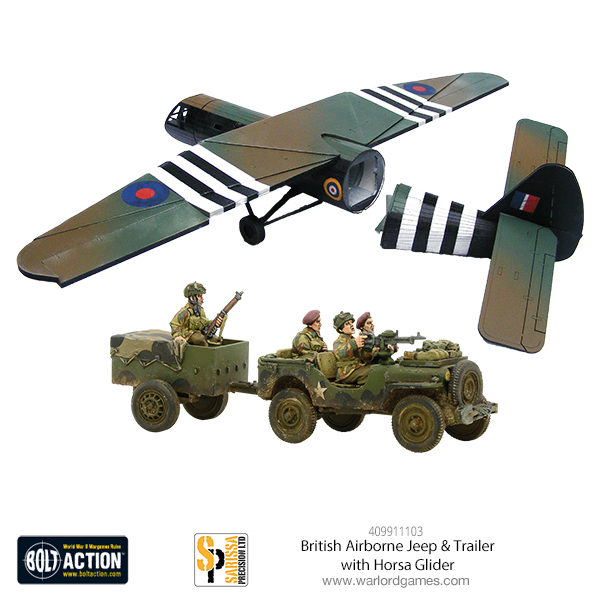D-Day to Berlin – Battleground Europe supplement to Bolt Action takes you feet first into action with 15 challenge packed scenarios! Here Scenario 2 from pages 20-22 gets you mounted up with the Glider assault troops:
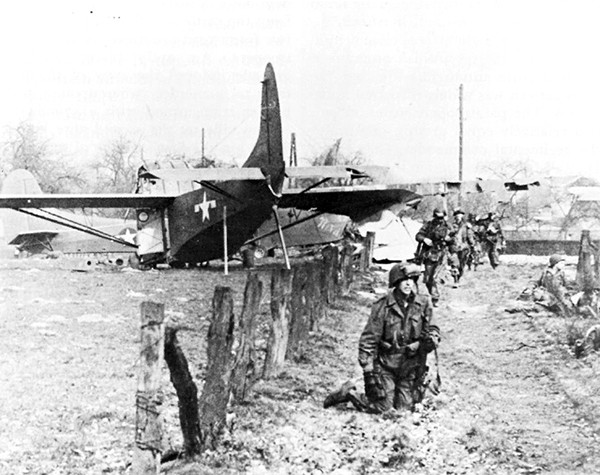
Glider Assault D-Day
While most gliders landed some distance away from the enemy, others were set upon as soon as they touched the ground. The glider infantry must land, regroup, and fend off the Germans!
Opposing Forces
This scenario is played between an attacking US or British force and a defending German force. German platoons should be taken from the 1944 – Normandy selector in the Armies of Germany book, but may include no vehicles with a Damage value of 8+ or higher. British platoons should be taken from the 1944 – Market Garden selector in the Armies of Great Britain book. US platoons should be taken from the 1944 – Operation Market Garden selector in the Armies of the United States book but may include no armoured vehicles.
Set-Up
The German player must nominate at least half his force as his first wave. Any units not in the first wave are held back in reserve. Due to the massive confusion among the German lines, units being brought in from the reserves suffer an additional -1 morale when rolling to see if they may deploy.
No Allied units are deployed at the start of the battle. The Allied player must separate his units into ‘sticks’ of between 12-40 models, or 1 artillery unit (or vehicle) and 5-12 models. Each stick is mounted in a glider. Units cannot be split between different gliders.
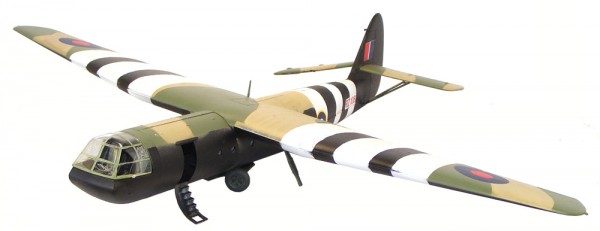
Special Rules
Night Fighting
Since this scenario takes place during the predawn hours of D-Day, this scenario uses the Night Fighting rules (see page 20 of Battleground Europe).
Gliders
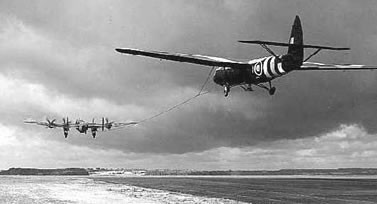
The Allied player deploys his units using gliders. Each turn, at least one glider will land, with the possibility of more. Whenever an Allied order die is drawn from the cup, the Allied player rolls that order die. If the result is Run or Advance, a glider lands. If it is the last Allied order die for the turn and no gliders have landed for the turn, the roll succeeds automatically.
When a glider lands, the Allied player chooses a point on his table edge. This point designates the landing trajectory of the incoming glider, and continues across the table perpendicular to the Allied player’s table edge. Next, the Allied player rolls a die and consults the glider landing results.
Glider Landing Results
- 1: Crash! The glider lands right on your table edge. Deploy all units in the glider within 6”of the crash site. Each unit suffers D6 hits and takes D3 pin markers.
- 2-3: Short! The glider lands at any point along its trajectory, no closer than 12” from your table edge and no further than 24” from your table edge. Deploy each unit within 6” of the glider. Each unit gets a pin marker.
- 4-5: Long! The glider lands at any point along its trajectory, no closer than 24” from your table edge. Deploy each unit within 6” of the glider. Each unit gets a pin marker.
- 6: Plucky Piloting! Your pilot has had a sudden flash of brilliance. You can land your glider anywhere on the battlefield, regardless of where you placed your trajectory. Deploy each unit within 6” of the glider. They start with no pin markers.
The pilot cannot land on any terrain other than open ground. If given no choice, then after the glider has landed, treat its result like a crash as outlined in the table above. Once the glider is on the ground, it counts as an obstacle under the terrain rules. If they don’t have glider models, the players may use a small patch of rubble to represent the crashed glider, though the enterprising modeller may wish to mock up a crashed glider such as the American WACO CG-4A or British Horsa for added flair!
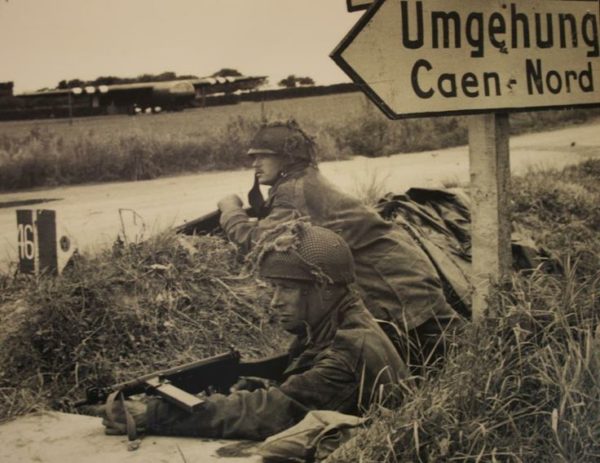
Objective
The goal for each side is simple: cause as much damage to the opposing forces while preserving your own.
First Turn
The battle begins. During the first turn, the German player must bring his entire first wave on to the battlefield. These units can enter the table from any table edge, and must be given either a Run or Advance order. Note that no order test is
required when bringing units on to the battlefield as part of a first wave. When the German player brings in reserves, they also may be deployed along any table edge.
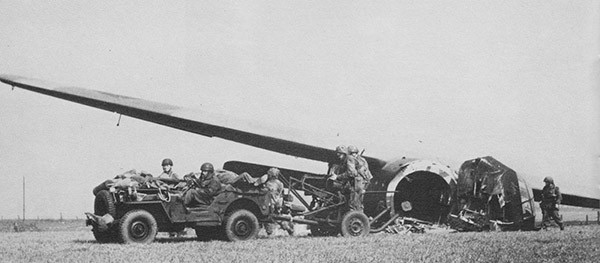
Game Duration
Keep a count of how many turns have elapsed as the game is played. At the end of turn 7, roll a die. On a result of 1, 2 or 3, the game ends; on a roll of 4, 5 or 6, play one further turn.
Victory!
Players score 1 victory point for each enemy unit destroyed. At the end of the game calculate which side has won by adding up victory points as follows. If one side scores at least 2 more victory points than the other, then that side has won a clear victory. Otherwise the result is a draw!
There are 14 more scenarios to delve into the European campaign within the pages of Battleground Europe. We also expand on these with ideas and scenarios from everyone in the community, such as the D-Day bunker assault, for you to be inspired & challenged by – good luck with those dice rolls!
Battleground Europe – D-Day to Berlin
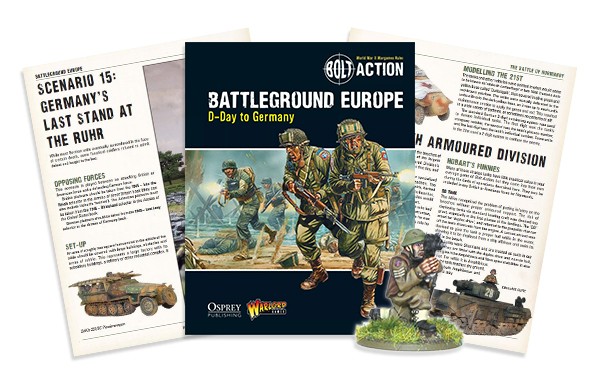
This Theatre Book is a supplement to the tabletop wargame Bolt Action. It deals with the final phase of World War II in Western Europe. It begins during the build-up to the Invasion of Normandy, and follows the combatants through to the crumbling of the Third Reich and German surrender. D-Day to Berlin describes the context for games set within this phase of the war. What was it like to storm the beaches of Normandy? How formidable was the bocage country? What was it like to fight in the snowy woods of the Ardennes?
By addressing these and many other questions, we can hope to enjoy more than just the game itself – we can perhaps imagine a little of what those brave men went through. This is not a definitive account of the campaign, nor is it meant to be. Think of it more as a tour through history, stopping at places of interest and pointing out pertinent information as we go.
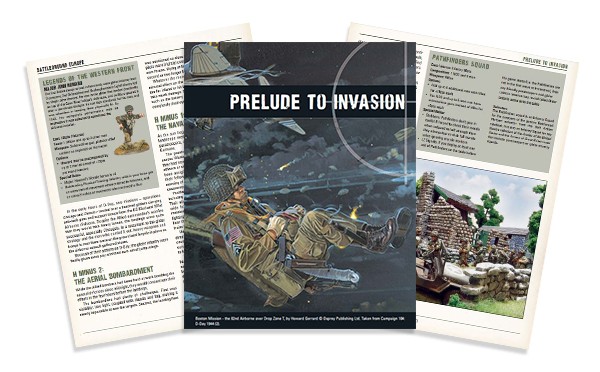
You will find several scenarios within the 108 pages. Some depict actual historical battles, while others offer a view on typical operations that give a sense of what the fighting was like. For the more historically minded reader, we’ve included details of various units that allow you to construct armies from specific time periods and areas of conflict. On the other hand, this book also allows for lots of ‘what if’ battles to be fought out, using equipment that was on hand at the time.
